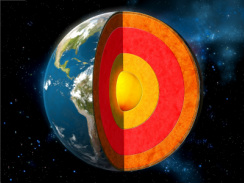I
was magma deep within the Earth. Suddenly, I felt intense heat and pressure
surrounding me, compacting, until I solidified into a rock. What happened was
intense heat and pressure transforming me from liquid magma to solid rock, hence
my name. Next, I was changed into an igneous rock when I felt the Earth quaking
around me. I was shot to the surface in a volcanic eruption where I melted into
lava. Shortly after, I cooled quickly to become a shiny piece of slate. When I
melted back into a liquid it was like being set free from a cage, I could move
freely. After many years, I started to erode into tiny fragments. Finally, I was
transformed into a sedimentary rock when the tiny pieces of me were cemented and
compacted with other pieces of rocks and sand. Thinks of it like this, your body
is a glass sculpture. Imagine someone smashing you into millions of shards.
Next, they glue you back together with fragments of other glass sculptures that
look nothing like you used to. Millions of years later, I weathered and eroded
until I’m fragments again. A strong storm pushes me down a volcano where I
melted back into magma. The heat and pressure then transform me back into a
metamorphic rock.
The first layer of the Earth is the crust. This layer is five miles deep and is the second lightest layer, volume-wise. Next, is the mantle. The mantle is a liqid layer that is 1800 miles deep it has the largest volume of all the layers. It's temperature is 4000 degrees Fahrenheit. The outer core is so hot that all the rocky contents are liquid (9000 degrees F). This layer is 1400 miles thick, it is also composed of melted nickel and iron. The inner core is so pressurized that the metals are forced to become solid and fibrate in one place. Inner core is 4000 miles under the surface and is 800 miles across. There is 45,000,000 pounds of pressure per square inch (3,000,000 times the air pressure at sea level).
This week in Earth Science we learned about the layers of Earth. The layers are the crust, mantle, lithosphere, outer and inner core. The crust is divided into two parts, the continetal crust and oceanic crust. Continetal crust is the part of the crust that is under land. Oceanic crust is the part of the crust that is under the ocean floor. The lithosphere is between the crust and mantle, contains unmelted rocks under the surface. The mantle is where the rocks become magma due the intense heat and pressure. The outer core is the bigger part of the core that surrounds the inner core. The inner core has the least volume of all of Earth's layers.
My hypothesis was "If I place drops of water on the coins then it will hold about 20 drops per coin." I learned how to make a graph on Microsoft Excel. I also learned that atoms can bond to create a different result.

 RSS Feed
RSS Feed